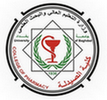The College of Pharmacy discussed the MSc thesis entitled “Synthesis, Characterization, and Preliminary Pharmacological Evaluation of New Naproxen Derivatives Containing 1,3,4-thiadiazole” by the student Ghanim Ali Mahdi and the supervisor, Lecturer Dr. Zainab Abdelhadi Dakhel, at the Pharmaceutical Chemistry Department. A series of naproxen compounds have been developed based on 1,3,4 thiadiazole using two different methods. These methods enabled the creation of compounds with possible medicinal uses. Molecular docking analysis, as well as a comparison of laboratory results to final target medication performance against specific target proteins. The investigation includes the examination for the evaluation of anti-inflammatory activities exhibited by the newly synthesized compounds. The first method involved converting the carbonyl group of naproxen into an ester using SOCl2 and methanol. After that formation of naproxen hydrazide through the reaction of ester with hydrazine hydrate. Then naproxen hydrazide was transformed into the potassium salt of dithiocarbazate using carbon disulfide (CS2) and a basic solution. The dithiocarbazate derivative was further oxidized with sulfuric acid to produce a compound containing the 1,3,4 thiadiazole -2-thiol ring. This marked the completion of the pathway. For the second pathway, phosphorous oxychloride (POCl3) was used to facilitate the reaction between naproxen and thiosemicarbazide, resulting in a compound containing a 1,3,4-thiadiazole-2-amine structure. Following these steps, the final compounds (Gh1-8) were obtained through an alkylation reaction involving alkyl halides. This concluded the synthesis phase of the research project. Following the creation of the desired compounds, a thorough analysis was carried out using ART-FTIR spectroscopy and 1H-NMR analysis to determine their structural properties and better understand their characteristics. A molecular docking analysis was conducted on the newly synthesized compounds against the binding pocket of receptor for COX-2. The study focused on the titled compounds (Gh1-8) and their respective binding affinity values were determined against the enzyme target site with PDB ID: 3q7d. Additionally, we conducted an evaluation to assess the anti-inflammatory efficacy of the synthesized compounds in vivo by inducing paw edema in Albino rats using egg whites, and compared their effectiveness to naproxen and DMSO, with the latter serving as a control. The study results showed that the calculated ∆G values for the compounds were equal to -8.147, -8.67, -7.405, -8.737, -8.024, -3.653, -8.49, and -7.335 kcal/mol when compared to the reference compound (naproxen), which exhibited an affinity value of -8.707 kcal/mol. The results from the anti-inflammatory assessment demonstrated that the formulated compounds exhibited significant properties in reducing induced paw edema in Albino rats, showcasing efficacy similar to the reference compound. Notably, the experimental data hinted at the potential of the synthesized compounds to exhibit superior anti-inflammatory effects compared to the reference. The study recommended The COX-1:COX-2 inhibitory ratio can be used to examine the selectivity of the tested substances for the COX-2 enzyme. Exploring the chemicals’ other possible biological features, such as antimicrobial and anticancer activities, is also critical. Furthermore, heterocyclic 1,3,4-thiadiazole 2-thiol and 2-amine derivatives of various NSAIDs should be synthesized and their biological effects evaluated. Finally, the negative effects of the synthesized compounds, particularly ulcerogenicity, should be investigated and compared to Naproxen.



